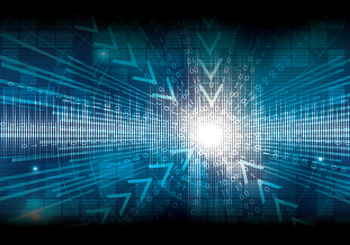Magnetic Memory Devices Difficult to Corrupt
Magnetic attraction: memory based on permeability could be less corruptible
This is a Press Release edited by StorageNewsletter.com on October 6, 2015 at 2:45 pmNew magnetic memory devices are difficult to corrupt
By Hamish Johnston, editor, Physicsworld.com
Magnetic attraction: memory based
on permeability could be less corruptible
(Courtesy: iStockphoto/evryka23)
A new kind of device that can store information using the magnetic permeability of a material has been created by physicists in the US. The devices could be much more stable than conventional magnetic data-storage devices, which can be corrupted by stray magnetic fields. The devices are also less susceptible to radiation damage, and the inventors claim that the storage method could be adapted to create high-density memory devices.
Magnetic memory chips, magnetic strips on credit cards and HDDs all store information in the magnetization of materials. In this approach, a binary bit (0 or 1) is written to the device by magnetizing a very small region of it. The information can then be read out later by measuring its magnetization.
Corruption problem
But there is one big problem with storing data magnetically, which is that the information can be corrupted by external magnetic fields and by thermal fluctuations. In the case of data stored on credit cards, this has been solved by introducing radio-frequency (RF) chips – but this introduces its own problem. Unlike magnetic bits, which must be read at very short distances, RF chips can be read some distance away – and that can cause security concerns.
The new memory, which could solve both of these problems, has been created by Alan Edelstein and colleagues at the US Army Research Laboratory, along with scientists at Corning, the University of Nebraska and the Naval Research Laboratory. In the new devices, data are stored by changing the magnetic permeability of a tiny region of a magnetic material.
Permeability is a measure of the magnetization of a material that results from the application of a magnetic field. Being an intrinsic property of a material, it is much less susceptible to change by external agents such as stray magnetic fields.
Reading and writing
Edelstein and colleagues have taken an important step towards a practical permeability-based memory by coming up with a way of writing the data and then reading them back. They made several prototype devices using high-permeability alloys of iron and nickel. A thin layer of the alloy was deposited onto a non-magnetic substrate and then lithography techniques were used to create circular regions of alloy just 300nm across that are the individual data bits.
Each alloy bit has an amorphous atomic structure, which gives it a very high magnetic permeability. However, when a bit is heated by a laser for about 100μs, it becomes crystalline after cooling, thus giving it a much lower permeability. So, by firing a laser at specific bits, the team was able to write information to the device.
Data were then read from the device by measuring the permeability of the individual bits using a magnetic tunnel junction (MTJ) sensor, which works on the same principles as the read heads in HDDs. This involves applying a magnetic field to all of the bits and then scanning the MTJ across the bits to measure their magnetizations. The measurement confirmed that the bits that had been heated with the laser had much lower permeability than the bits that had not been heated.
Permeability in space
The team also investigated how the devices respond to gamma radiation, and found that their ability to store data is unaffected by relatively high doses of radiation. This could be important for creating memories for use on spacecraft. Current onboard memories are susceptible to radiation damage and must therefore be shielded, which adds to the weight and size of the components.
While the current writing process is limited by the wavelength of the laser, the team points out that technology developed for other heat-assisted memories could be adapted to create bits that are 20nm across or smaller. Permeability also offers a way to get round an effect called superparamagnetism, which causes the magnetization of very small magnetic bits to randomly flip direction. While superparamagnetism scrambles information stored in the magnetization, it would not affect data stored in the permeability.
The current devices can only be written to once, which makes them suitable for applications such as credit-card strips. However, the team is now working on a re-writable memory based on magnetic permeability.
The technology is described in the Journal of Physics D: Applied Physics.














 Subscribe to our free daily newsletter
Subscribe to our free daily newsletter

